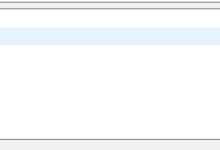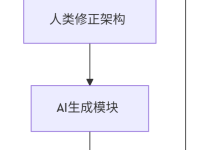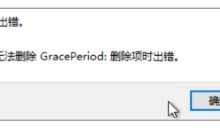ROS参数服务器
在ROS中,参数服务器(Parameter Server)是一个中心化的键值对数据库,用于存储和共享各种参数。这些参数可以是机器人配置、传感器校准值、算法常量等。参数服务器通过ROS的主节点(ROS Master)进行管理,支持多种数据类型(如整数、浮点数、字符串、列表、字典等),并且可以由不同的节点读取和修改。

参数服务器的基本概念
参数服务器使用键值对的形式存储数据,其中键是参数的名称,值是参数的具体内容。这些键值对可以通过ROS的主节点在不同的节点之间共享。参数服务器的数据存储在XML-RPC服务器中,ROS主节点负责管理和协调参数的读写操作。
参数的命名
参数的命名遵循ROS的命名空间规则,可以使用绝对路径或相对路径。绝对路径以斜杠(/)开头,相对路径则相对于当前节点的命名空间。例如:
-
绝对路径:/robot_name
-
相对路径:~robot_name
参数的类型
参数服务器支持多种数据类型,包括但不限于:
-
整数:int
-
浮点数:float
-
字符串:string
-
列表:list
-
字典:dict
-
多维数组:array
读取和设置参数
ROS提供了多种方法来读取和设置参数,包括命令行工具、Python API和C++ API。
命令行工具
-
设置参数:
rosparam set <param_name> <value>
例如,设置一个名为robot_name的参数为my_robot:
rosparam set /robot_name my_robot
-
读取参数:
rosparam get <param_name>
例如,读取robot_name参数:
rosparam get /robot_name
-
查看所有参数:
rosparam list
Python API
在Python中,可以使用rospy库来读取和设置参数。
-
设置参数:
import rospy
# 设置全局参数
rospy.set_param('/robot_name', 'my_robot')
# 设置私有参数(相对于当前节点的命名空间)
rospy.set_param('~robot_name', 'my_robot_private')
-
读取参数:
import rospy
# 读取全局参数
robot_name = rospy.get_param('/robot_name')
# 读取私有参数
robot_name_private = rospy.get_param('~robot_name', 'default_robot_name') # 第二个参数为默认值
C++ API
在C++中,可以使用ros::param命名空间中的函数来读取和设置参数。
-
设置参数:
#include <ros/ros.h>
int main(int argc, char **argv) {
ros::init(argc, argv, "param_example_node");
ros::NodeHandle nh;
// 设置全局参数
nh.setParam("/robot_name", std::string("my_robot"));
// 设置私有参数(相对于当前节点的命名空间)
nh.setParam("robot_name_private", std::string("my_robot_private"));
return 0;
}
-
读取参数:
#include <ros/ros.h>
int main(int argc, char **argv) {
ros::init(argc, argv, "param_example_node");
ros::NodeHandle nh;
// 读取全局参数
std::string robot_name;
nh.getParam("/robot_name", robot_name);
// 读取私有参数
std::string robot_name_private;
nh.getParam("robot_name_private", robot_name_private);
ROS_INFO("Robot Name (Global): %s", robot_name.c_str());
ROS_INFO("Robot Name (Private): %s", robot_name_private.c_str());
return 0;
}
参数服务器的高级用法
参数文件
参数可以存储在文件中,通常使用 YAML 格式。通过 rosparam 命令加载参数文件。
-
创建参数文件:
# config.yaml
robot_name: "my_robot"
robot_pose:
x: 1.0
y: 2.0
z: 3.0
sensors:
– name: "camera"
type: "rgb"
– name: "lidar"
type: "laser"
-
加载参数文件:
rosparam load_file config.yaml
动态参数
动态参数可以在节点运行时动态修改。ROS提供了dynamic_reconfigure库来实现这一功能。
-
创建配置文件:
# config/robot.cfg
int robot_speed, 0, 100, "Robot speed in cm/s", 50, 0, 100
-
编写配置服务器:
#include <ros/ros.h>
#include <dynamic_reconfigure/server.h>
#include <my_robot/RobotConfig.h>
void callback(my_robot::RobotConfig &config, uint32_t level) {
ROS_INFO("Reconfigure Request: %d m/s", config.robot_speed);
}
int main(int argc, char **argv) {
ros::init(argc, argv, "robot_config_node");
ros::NodeHandle nh;
dynamic_reconfigure::Server<my_robot::RobotConfig> server(nh);
dynamic_reconfigure::Server<my_robot::RobotConfig>::CallbackType f;
f = boost::bind(&callback, _1, _2);
server.setCallback(f);
ros::spin();
return 0;
}
-
编写配置客户端:
#include <ros/ros.h>
#include <dynamic_reconfigure/client.h>
#include <my_robot/RobotConfig.h>
void callback(my_robot::RobotConfig &config, uint32_t level) {
ROS_INFO("New speed: %d m/s", config.robot_speed);
}
int main(int argc, char **argv) {
ros::init(argc, argv, "robot_config_client");
ros::NodeHandle nh;
dynamic_reconfigure::Client<my_robot::RobotConfig> client("/robot_config_node", true);
my_robot::RobotConfig config;
// 获取当前配置
client.getConfig(config, –1);
// 修改参数
config.robot_speed = 75;
client.updateConfig(config);
ros::spin();
return 0;
}
参数的持久化
参数可以持久化存储,以便在ROS节点重启后仍然保留。可以通过rosparam命令或ROS API实现参数的持久化。
-
使用 rosparam 命令持久化参数:
rosparam dump config.yaml
rosparam load config.yaml
-
使用ROS API持久化参数:
#include <ros/ros.h>
int main(int argc, char **argv) {
ros::init(argc, argv, "param_persistence_node");
ros::NodeHandle nh;
// 设置参数
nh.setParam("/robot_name", std::string("my_robot"));
// 持久化参数
nh.deleteParam("/robot_name"); // 删除参数
nh.getParam("/robot_name", std::string("default_robot_name")); // 读取默认值
return 0;
}
参数的默认值
在读取参数时,可以指定默认值,以防止参数未设置时导致程序崩溃。
-
Python示例:
import rospy
# 读取参数,指定默认值
robot_name = rospy.get_param('/robot_name', 'default_robot_name')
-
C++示例:
#include <ros/ros.h>
int main(int argc, char **argv) {
ros::init(argc, argv, "param_default_value_node");
ros::NodeHandle nh;
// 读取参数,指定默认值
std::string robot_name = nh.param<std::string>("/robot_name", "default_robot_name");
ROS_INFO("Robot Name: %s", robot_name.c_str());
return 0;
}
参数服务器的实际应用
参数服务器在ROS中有着广泛的应用,特别是在机器人仿真和控制中。
机器人配置
在机器人仿真中,参数服务器可以用于存储机器人的配置信息,如关节的最大速度、传感器的校准值等。
-
配置文件示例:
# robot_config.yaml
max_joint_speed: 1.0
sensor_calibrations:
– name: "camera1"
calibration_matrix: [1.0, 0.0, 0.0, 0.0, 1.0, 0.0, 0.0, 0.0, 1.0]
– name: "camera2"
calibration_matrix: [0.9, 0.1, 0.0, 0.1, 0.9, 0.0, 0.0, 0.0, 1.0]
-
加载配置文件并读取参数:
#include <ros/ros.h>
#include <yaml-cpp/yaml.h>
#include <string>
#include <vector>
struct SensorCalibration {
std::string name;
std::vector<double> calibration_matrix;
};
int main(int argc, char **argv) {
ros::init(argc, argv, "robot_config_node");
ros::NodeHandle nh;
// 加载配置文件
ros::param::load_file("robot_config.yaml", nh);
// 读取参数
double max_joint_speed;
nh.getParam("max_joint_speed", max_joint_speed);
std::vector<SensorCalibration> sensor_calibrations;
XmlRpc::XmlRpcValue calibrations;
nh.getParam("sensor_calibrations", calibrations);
for (int i = 0; i < calibrations.size(); ++i) {
SensorCalibration calibration;
calibration.name = calibrations[i]["name"].as<std::string>();
calibration.calibration_matrix = calibrations[i]["calibration_matrix"];
sensor_calibrations.push_back(calibration);
}
ROS_INFO("Max Joint Speed: %f", max_joint_speed);
for (const auto &calibration : sensor_calibrations) {
ROS_INFO("Sensor %s Calibration Matrix: %s", calibration.name.c_str(), YAML::Dump(calibration.calibration_matrix).c_str());
}
return 0;
}
算法参数调优
在算法开发中,参数服务器可以帮助开发者在运行时动态调整算法参数,从而优化算法性能。
-
配置文件示例:
# algorithm_config.yaml
threshold: 0.5
max_iterations: 1000
-
加载配置文件并读取参数:
#include <ros/ros.h>
#include <yaml-cpp/yaml.h>
int main(int argc, char **argv) {
ros::init(argc, argv, "algorithm_tuning_node");
ros::NodeHandle nh;
// 加载配置文件
ros::param::load_file("algorithm_config.yaml", nh);
// 读取参数
double threshold;
nh.getParam("threshold", threshold);
int max_iterations;
nh.getParam("max_iterations", max_iterations);
ROS_INFO("Threshold: %f, Max Iterations: %d", threshold, max_iterations);
// 动态调整参数
nh.setParam("threshold", 0.6);
nh.setParam("max_iterations", 1500);
return 0;
}
仿真场景设置
在机器人仿真中,参数服务器可以用于设置仿真场景的参数,如地图路径、仿真时间等。
-
配置文件示例:
# simulation_config.yaml
map_path: "/path/to/map.yaml"
simulation_time: 60.0
-
加载配置文件并读取参数:
#include <ros/ros.h>
#include <yaml-cpp/yaml.h>
#include <string>
int main(int argc, char **argv) {
ros::init(argc, argv, "simulation_setup_node");
ros::NodeHandle nh;
// 加载配置文件
ros::param::load_file("simulation_config.yaml", nh);
// 读取参数
std::string map_path;
nh.getParam("map_path", map_path);
double simulation_time;
nh.getParam("simulation_time", simulation_time);
ROS_INFO("Map Path: %s, Simulation Time: %f", map_path.c_str(), simulation_time);
return 0;
}
参数服务器的注意事项
在使用参数服务器时,需要注意以下几点:
参数的命名冲突:避免使用相同的参数名称,特别是在多个节点中使用相同的命名空间时。
参数的类型:确保在读取和设置参数时使用正确的数据类型。
参数的持久化:合理使用参数的持久化功能,避免不必要的文件读写操作。
参数的动态调整:在使用dynamic_reconfigure时,确保配置文件和配置服务器、客户端的参数名称和类型一致。
实例项目:机器人参数调整
假设我们有一个简单的机器人控制节点,需要根据不同的任务调整机器人的速度和转向角度。我们将使用参数服务器来实现这一功能。
项目结构
-
src/robot_control_node.cpp
-
config/robot_config.yaml
-
config/robot.cfg
配置文件
# config/robot_config.yaml
speed: 0.5
turn_angle: 30.0
配置文件
# config/robot.cfg
int speed, 0, 100, "Robot speed in m/s", 50, 0, 100
int turn_angle, 0, 180, "Robot turn angle in degrees", 30, 0, 180
控制节点
#include <ros/ros.h>
#include <geometry_msgs/Twist.h>
#include <dynamic_reconfigure/server.h>
#include <my_robot/RobotConfig.h>
// 用于存储参数的全局变量
double speed = 0.5;
double turn_angle = 30.0;
// 动态参数回调函数
void dynamicCallback(my_robot::RobotConfig &config, uint32_t level) {
speed = config.speed;
turn_angle = config.turn_angle;
ROS_INFO("Reconfigured: speed = %f, turn_angle = %f", speed, turn_angle);
}
int main(int argc, char **argv) {
ros::init(argc, argv, "robot_control_node");
ros::NodeHandle nh;
// 创建发布者
ros::Publisher cmd_vel_pub = nh.advertise<geometry_msgs::Twist>("/cmd_vel", 10);
// 加载初始参数
nh.getParam("speed", speed);
nh.getParam("turn_angle", turn_angle);
// 创建动态参数服务器
dynamic_reconfigure::Server<my_robot::RobotConfig> server(nh);
dynamic_reconfigure::Server<my_robot::RobotConfig>::CallbackType f;
f = boost::bind(&dynamicCallback, _1, _2);
server.setCallback(f);
// 控制循环
ros::Rate rate(10); // 10 Hz
while (ros::ok()) {
geometry_msgs::Twist cmd_vel;
cmd_vel.linear.x = speed;
cmd_vel.angular.z = turn_angle * M_PI / 180.0; // 转换为弧度
cmd_vel_pub.publish(cmd_vel);
ros::spinOnce();
rate.sleep();
}
return 0;
}
运行项目
编译项目:
确保项目中包含dynamic_reconfigure依赖,并编译项目。
catkin_make
启动ROS核心:
roscore
加载参数文件:
rosparam load_file config/robot_config.yaml
启动控制节点:
rosrun my_robot robot_control_node
动态调整参数:
使用rqt_reconfigure工具动态调整参数。
rosrun rqt_reconfigure rqt_reconfigure
通过以上步骤,您可以在ROS参数服务器中动态调整机器人的速度和转向角度,从而实现更灵活的机器人控制。
结尾
参数服务器是ROS中一个非常强大的工具,用于存储和共享各种参数。通过合理使用参数服务器,可以简化机器人配置、算法调优和仿真场景设置。希望本节内容能帮助您更好地理解参数服务器的原理和用法,并在实际项目中灵活应用。
 网硕互联帮助中心
网硕互联帮助中心






![[TG开发]简单的回声机器人-网硕互联帮助中心](https://www.wsisp.com/helps/wp-content/uploads/2025/08/20250816114512-68a06f48800c8-220x150.png)

评论前必须登录!
注册